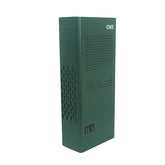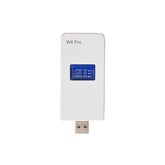Supervision and Countermeasures of UAV Jammers
In recent years, with the rise of the drone industry, chaos such as black flying bans, aerial photography peeping, and falling accidents have occurred from time to time, and the use and management of drones is imminent. In order to avoid serious injuries caused by black flying drones, it is necessary to supervise and countermeasures for low, slow and small drones.
At present, there are two main methods of monitoring and countermeasures for drones. One is administrative supervision, including laws and regulations on the prevention of black flying drones issued by the government; the other is technical prevention. From a technical point of view, the use of unmanned aerial vehicles Equipment such as man-machine jammers. There are many areas currently disturbed by black flying drones. In order to solve the problems caused by black flying drones, local governments have also proposed many solutions. For example, in order to strengthen drone management, a new Aviation Law was issued and implemented, strictly limiting the area where drones can be used, such as densely populated areas.

After learning about the administrative regulation of black flying drones, we will discuss technical prevention in detail. Low, slow, and small UAVs use frequency bands such as 2.4Hz and 5.8Hz, as well as assisted positioning of the GPS navigation system. During use, these frequency bands need to be used for communication and interaction. Technical prevention Low, slow, and small drones use signal jamming equipment such as drone jammer to interfere with the communication between the drone and the remote control, so that the drone loses the signal and makes actions such as return/descent/stop, etc. No other harmful actions can be performed.
Now that the interference frequency band has become the primary consideration, it is necessary to use a drone jammer in special cases to technically form a flight zone to prevent possible harm.













